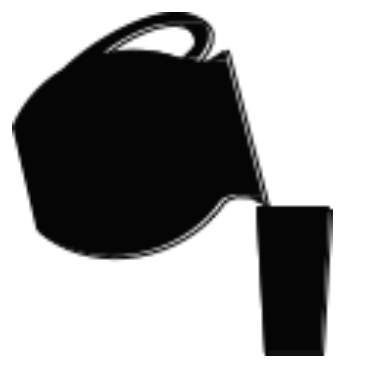The Truth About Juice

Juice is an easy way to enjoy fruit. Keeping juice on hand is good for your whole family! It provides several key nutrients important for good health.
- Vitamin C helps heal cuts and bruises and fight infection.
- Vitamin C also helps your body use the iron from food.
- Vitamin A is in tomato and vegetable juices. Vitamin A helps keeps eyes and skin healthy.
- Juice provides carbohydrates, which supply your body with energy. Purchase 100 percent juice to be sure the carbohydrates you are getting is from fruit or vegetables and not added sugar.
How much juice?
A serving of juice each day is a good way to be sure your family is getting enough Vitamin C. A serving is ½ to ¾ cup.

Problems with too much juice
Drinking too much juice can cause problems. Some of these problems include:
- Too many calories. Drinking more than ½ cup to ¾ cup of juice each day may give your child more calories than he or she needs. That may contribute to their becoming overweight.
- Not enough calcium. Drinking too much juice may keep your child from drinking milk. This keeps your child from getting the calcium they need for healthy bones.
- Too much sugar. Drinking juice several times a day promotes cavities in teeth. Always serve juice in a cup instead of a bottle.
- Diarrhea. Too much juice may cause loose bowel movements.
- Constipation. Drinking juice instead of eating fruit reduces the amount of fiber your child eats. Fiber can help prevent constipation.

Fruit juice or fruit drink?
Did you know there is a difference between 100 percent fruit juice and fruit drinks? Read the food labels when choosing beverages.
- Look for 100 percent juice on the label.
- 100 percent Vitamin C does not mean 100 percent juice. Fruit drinks are made from a small amount of juice added to sweetened water.
- Read the list of ingredients to know what you are buying. If water and high fructose corn syrup are near the top of the list, the beverage is mostly sugar water.
Serving milk with meals and 100 percent juice for snacks is a good way to be sure your family is getting the variety of nutrients needed for strong and healthy bodies.
Juice Recommendations (AAP, 2017)
- Infants younger than 1 year old should not drink juice
- Children (1 to 3 years old) should limit juice to 4 ounces per day (1/2 cup)
- Children (4 to 6 years old) should limit juice to 4 to 6 ounces per day
Reviewed by: Jenni Kinsey, MS, RD, LD & Hasina Rakotomanana, MS
References:
USDA. (2017). Nibbles for Health. Retrieved from: https://www.fns.usda.gov/
AAP. (2017). Fruit Juice in Infants, Children, and Adolescents: Current Recommendations. Retrieved from: https://pediatrics.aappublications.org/
Deana Hildebrand, PhD., RD,LD, Associate Professor & Extension Specialist
Christine Walters, RDN, LD, MS, Extension Program Assistant
Oklahoma Cooperative Extension Service
Nutritional Sciences Department, Oklahoma State University
